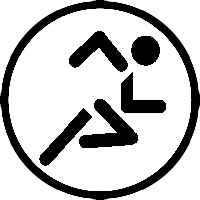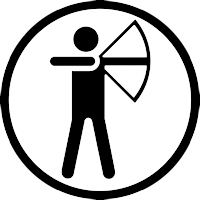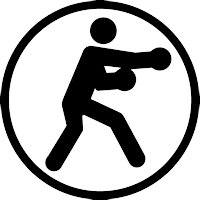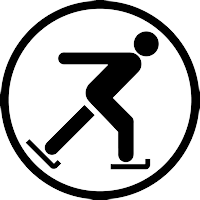Earlier today I got an email (spam???) from a company trying to sell steroid pills / etc.
It said the following (edited so I am not accidentally advertising their company):
"Hi friend,
Good day! This is Vera from NAME OF COMPANY REMOVED, which has engaged in R&D, production and marketing steroid powders, HGH, peptides and Sarms for more than 10 years, our products are exported well into U.S. , Canada, Brazil, UK, Germany, Poland, Greece, Italy, Australia and many other areas. Our company gains high reputation among our old and new clients through the highest quality, best price, fast and safe delivery as well as the excellent customer service, many of them are famous labs.
What we can serve for our customers:
◊ 100% legit steroid powders with top purity
◊ Competitive price with frequent discount
◊ Mature logistic system to assure the delivery time
◊ Discreet package for worldwide shipping
◊ One to one on&after-sales customer service to support
If you have interests, small trial order for first cooperation to test our quality and shipping efficiency is welcomed. I'll try my best to satisfy you on your request. Looking forward to your kind reply.
Regards,
Vera
COMPANY WEBSITE REMOVED"
Getting this email disgusted me.
It is bad enough when professional athletes are induced into taking steroids because they really want to win and they manage to find someone willing to sell them a steroid or illicit drug that will allow them to cheat.
But it is even worse to be trying to sell this crap to a personal trainer / sports coach, who would then effectively become drug dealers trying to sell the drugs to their clients / athletes. That to me is much worse, as it tarnishes the sacred role of a teacher (which is what I consider myself to be) and turns the teacher into a drug dealer who can effect multiple students / clients. So not just one person is effected in such a scenario, but multiple people.
No reputable person should be dealing in steroids.
Not an athlete. Not a coach. Not an instructor. Not a personal trainer. Not a doctor. Not a nutritionist. Nobody.
Anyone who is encouraging cheating / drugging yourself to bulk up should be ashamed of themselves, and when caught banished from the industry.
Vitamins, minerals, calcium supplements, whey protein powders, creatine - these I don't have a problem with because they are all natural things we get in our diets, they are just being used as supplements to make certain the athlete is getting enough of what they need.
Whey protein is just a protein found in milk, which is separated during the process of making cheese, and is sold in powder form so people can take mix with water / milk for a protein drink. Creatine is just a chemical found in red meat that regulates energy to muscle tissue, and thus is handy for losing weight / building muscle.
As such they are used by people who know they aren't eating enough red meat or not enough protein, so that they can maximize their body's natural ability to regulate energy / build new muscle tissue.
Man-made
Steroids however...
All sorts of bad side effects.
Decades of research into the topic has revealed while steroids do give a temporary advantage to athletes, they cause long term permanent side effects which I am not going to bother listing as there are so many of them. The most notable and common side effect is liver damage leading to terminal liver cancer, as steroids are also toxins and the liver will try to filter the toxins out - but doing so puts so much stress on the organ that it effectively kills the person's liver.
HGH is technically a natural hormone, human growth hormone, but humans usually only have large amounts of it when they are children or pregnant. Adults taking HGH pills is effectively unnatural and allows the person to build muscle at a faster than normal rate. It is heavily regulated too, and numerous celebrities and athletes have been arrested trying to smuggle HGH across international borders. So if it has to be smuggled into Canada by criminals, then it is definitely not something I am interested in.
SARMs, are various chemicals categorized as selective androgen receptor modulator are a type of androgenic drugs. They can be used legitimately for people who suffer from low testosterone, but for people who do not they are used to increase testosterone production. Various athletes in the NFL and NBA have been banned due to alleged use of SARMs.
Peptides are short chains of amino acids connected by peptide bonds, hence the name. They block and/or control sugar, and thus they can be used as anti-obesity medication, but are also used in the bodybuilding industry to increase energy levels to muscle tissue. Taking in combination with steroids, they give a person an unnatural edge over the competition. Some peptides can also effect the body's HGH production levels, can be used to increase testosterone levels, etc. As such an athlete who tests positive for certain peptides used to effect HGH, testosterone, and anything else that gives them a competitive edge is considered to have cheated.
Honestly... are people so obsessed with winning that they have to damage their liver and ruin the reputations just for a shiny trophy or gold medal to hang on a mantle?
Clearly some people are.
Ben Johnson, Lance Armstrong, Marion Jones, etc.
Thankfully there are some sports where doping doesn't really help. Figure skating for example is more about finesse than bulk muscle.
Tonya Harding already had the physique of an amazon that gave her a physical edge to perform triple axels - making her the first woman to complete a triple axel in a competition. But her fear of losing resulted in her conspiring with several men to put out a hit on rival Nancy Kerrigan's leg.
So there are always more ways than one to cheat in sports, but when you consider that Tonya Harding was banned from figure skating and later took up a brief career in boxing because of her financial problems.
Clearly cheating doesn't pay.
And selling the drugs to do so clearly means that a sports trainer is in it for the money, not because they actually enjoy teaching and guiding athletes.
Speaking for myself, I enjoy what I teach. It allows me to go outside and exercise regularly, and to get paid to do it. I cannot ask for anything better.
































